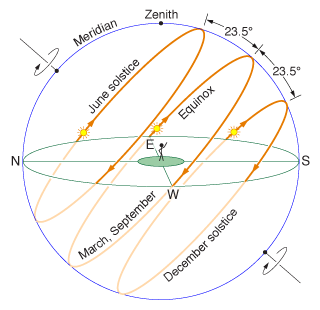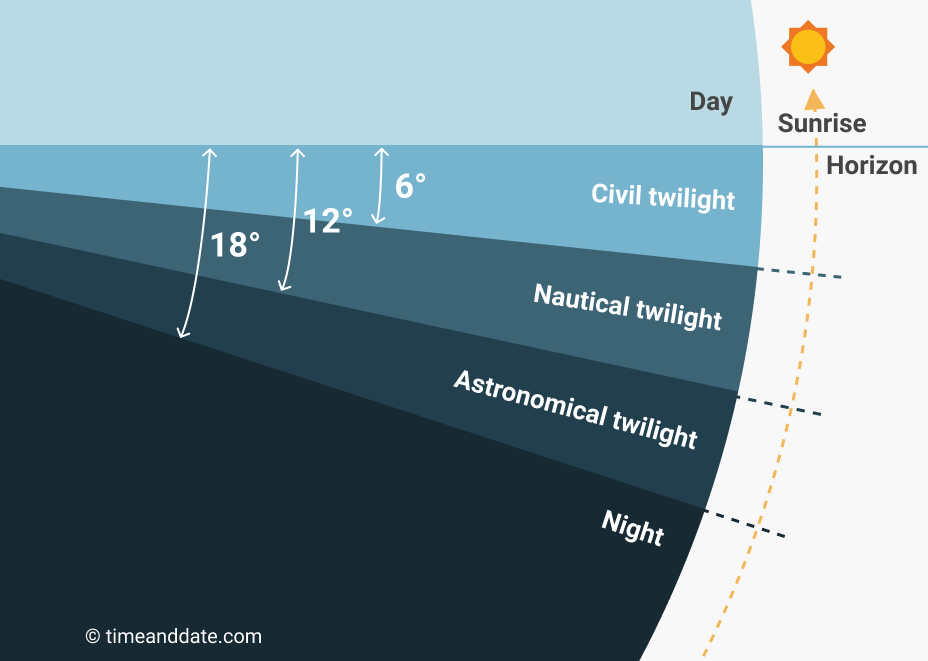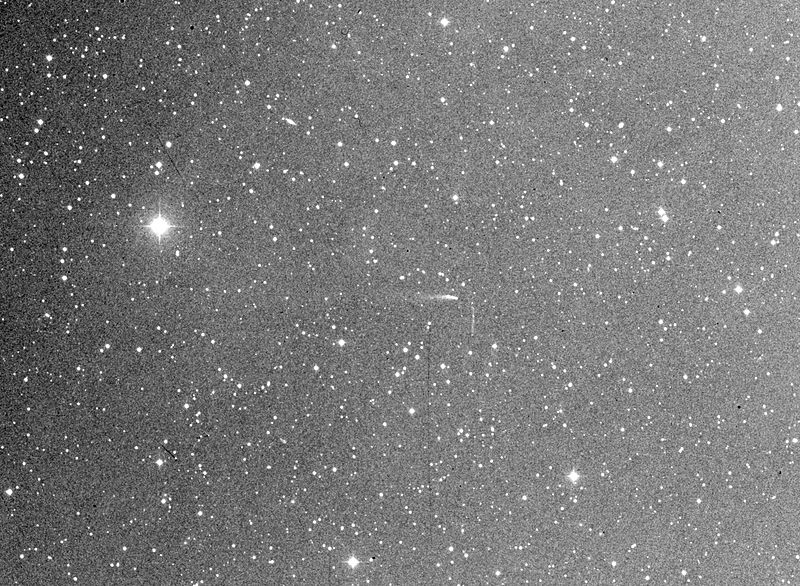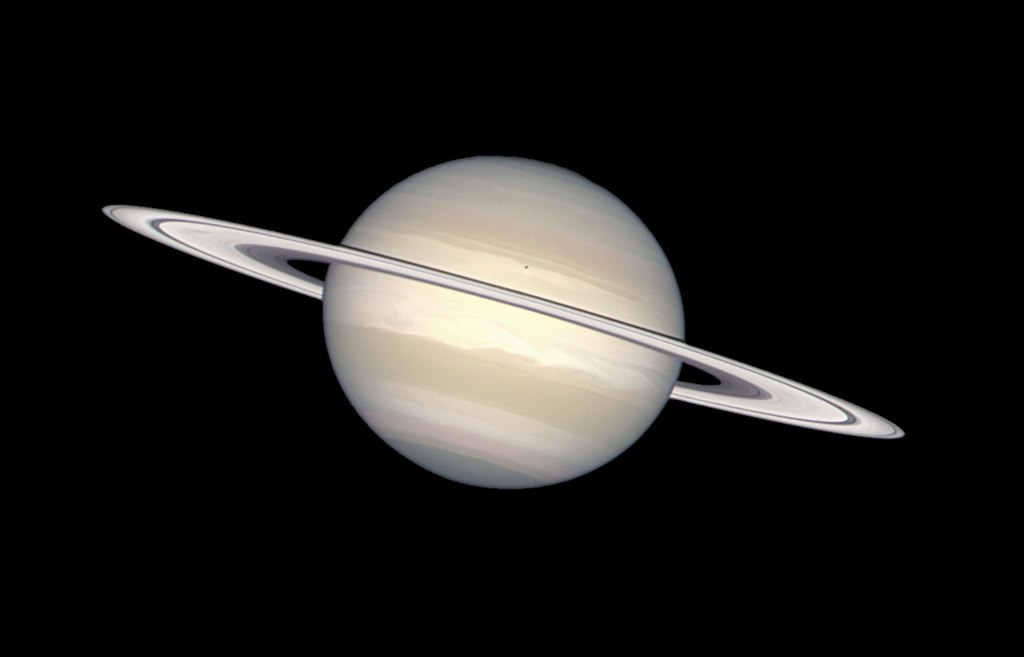Summer nights are short. We all know this well from childhood. And the shortest night falls on the summer solstice — this year it will happen on June 21. At this moment, the Sun is moving away the most to the north of the celestial equator, or, in scientific terms, the declination of the center of the solar disk reaches its maximum.
Why does this contribute to the extension of daylight hours? The closer a celestial body is to the north pole of the world, the greater its apparent daily path through the sky relative to that part of it that is “hidden” under the horizon. This statement is true for the Northern Hemisphere of our planet. In the Southern Hemisphere, the opposite is true. For observers at the equator, the horizon divides the circles of the daily rotation of the luminaries exactly in half at all times of the year, so day and night there always have the same duration.

Twilight Zone and “white nights”
But, in addition to the extension of the actual day, the “rise” of the Sun along the ecliptic has another interesting consequence. We have all observed such a phenomenon as twilight. Astronomers know that it has a fairly clear numerical measurement and allows us to estimate the brightness of the sky depending on how deep our luminary has sunk below the horizon. The interval between its sunset and the appearance of the first stars is called “civil twilight”. During this time, the solar disk sinks below the horizon by 6°, and there is still enough light outside for daily activity. Further, at the interval of the “depths” of the Sun from 6° to 12°, navigation twilight comes, when the stars become visible enough to choose convenient coordinates for determining with the help of appropriate tools, but the outlines of terrestrial objects are still clearly visible. Finally, astronomical twilight continues to the “depth” of 18°, when most observations can already be carried out, but it is better to choose targets for them in the southern part of the sky (if we are talking about our latitudes). Over the north-western or north-eastern part of the horizon during this period, you can notice the last “glare” of the evening or, respectively, the first rays of dawn.

At the time of the summer solstice, the declination of the Sun reaches 23.5°, therefore, its distance from the north pole of the celestial sphere is 66.5°. Atmospheric refraction — the refraction of light in the earth’s atmosphere – “raises” the solar disk by about half a degree. Therefore, we will start from the magnitude of 66°. Subtract 18° from this number, which determines astronomical twilight, and we get 48° — it is at this latitude in the Northern Hemisphere that a “full” night does not actually occur for several days in the vicinity of June 21. The largest city in Ukraine through which this latitude passes is Zaporizhzhia. The further north, the more such “astronomically twilight” nights become. In Kyiv, they are already continuing from the beginning of June to July 13-14.
6° further north (54° is the latitude of Minsk) navigation twilight does not end for several days, and civil twilight does not end at the 60th latitude. This period is commonly called “white nights”. During it, only the brightest celestial bodies can be observed – the Moon, Venus, Mars, Jupiter, Saturn, several stars with a brightness of 0.5ᵐ or higher. In fact, the duration of such a period in a particular city or country is no longer determined by precise astronomical calculations, but by local traditions that even provide for the celebration of the “beginning of the white nights” and their “end”. Astronomers go on forced leave for all this time or go to observe at more southern observatories.
The Earth in aphelion and the “supermoon”
What celestial events occur during the Kyiv “almost white nights”? In mid-June, Mercury will briefly appear before dawn — just 10-15 minutes before dusk. In the southern regions of Ukraine, it can be seen a little better. Its greatest western elongation will occur on June 16, and although its angular magnitude (23.2°) will be quite large, due to the small angle of inclination of the Mercury orbit to the horizon at this time, the visibility conditions of the planet in our latitudes will remain unfavorable.
On June 21, as already mentioned, the summer solstice will come, and on the 29th the Moon will be at the apogee of its orbit — its farthest point from the Earth. The distance between the centers of both bodies will be 406 576 km. Due to the peculiarities of the movement of our natural satellite, this apogee will also be its largest removal for the whole of 2022.
But our planet also moves around the Sun in an elliptical orbit. On July 4, it will pass its aphelion, that is, it will move away from the Sun at the maximum possible distance in our era of 1.0167 AU (152.1 million km).
All of these events — except the solstice, which will be a separate article — are very difficult, and more often impossible to observe with the naked eye or even with the help of astronomical instruments. But on the evening of July 13, we still highly recommend taking a close look at the Moon. On this day, it will pass the perihelion, and not a simple one, but the closest one this year: it will be separated from the center of the Earth by only 357,263 km. Soon after, it will enter the full moon phase. Journalists like to call such coincidences with the loud term “supermoon”, and here they can only be supported by thanking them for drawing public attention to celestial phenomena.
Comet with “asteroid” number
July of this year is marked by the appearance of an interesting comet Wilson-Harrington (4015 Wilson-Harrington) — one of the few with an “asteroid” number. It was first photographed by astronomers Albert Wilson and Robert Harrington at the Palomar Observatory on November 19, 1949, but the number of observations was insufficient to accurately determine the orbit, so the comet was “lost”. 30 years later, the famous asteroid researcher Eleanor Helin discovered a faint star-shaped object moving near the Earth on photographic plates. This time, its trajectory was calculated with sufficient accuracy, and when it was “extended” into the past, the positions of the object coincided well with the mysteriously disappeared comet Wilson-Harrington.

The comet’s orbit has a slight inclination to the ecliptic plane (less than 3°). Its orbital period is approximately 4 years and 3 months, and the perihelion lies slightly inside the Earth’s orbit. Consequently, it can approach us from time to time, and if it shows cometary activity at the same time, that is, it forms a coma and a tail, then it becomes bright enough and can be observed in small amateur telescopes. Unfortunately, it is almost impossible to predict such an “activation”.
The appearance of comet Wilson-Harrington this year is not one of the lucky cases: in our latitudes it will rise low above the southern horizon, and its maximum approach to Earth will take place on July 20 to a distance of 0.399 AU (59.6 million km). Before that, on July 9, the “tailed guest” will pass 6° north of Jupiter, and on July 30 it will be 8° north of Mars. Then it will continue to approach the Sun and will pass the perihelion on August 24. During this period of time, its glint can reach the 8th magnitude.
Among other noteworthy comets, we can mention C/2017 K2 (PanSTARRS), which will be in perihelion by the end of the year. In July-August, it will move along the constellations of Ophiuchus and Scorpio, and its visible glint will continue to grow and may even reach the 8th magnitude.
Planets and meteors in the summer of 2022
Large planets appear mainly in the second half of the night this summer, but from mid-July at about 11 p.m. UTC+3, Saturn will already rise. Neptune and Jupiter will join it towards the end of the month, and Uranus and Mars will join it in early August. The last two planets will be in conjunction on August 2, they will be separated by less than one and a half degrees in the sky.
The end of July and August will traditionally be “under the sign” of meteor showers: at first it will be the Southern and Northern δ-Aquariids with a total activity of up to 40 meteors per hour at the peak, and then the sky will be “flooded” with the well-known Perseids (up to 50 meteors per hour) and Cygnids.

On August 14, the Saturn confrontation will take place. The sixth planet will be visible all night, culminating around midnight, its glint will reach 0.3ᵐ. The gas giant is turned towards the Earth and the Sun with its north pole, respectively, we will see the northern side of the Saturnian rings. And a week later, Vesta (4 Vesta), the brightest asteroid of the Main Belt, will appear in the opposition configuration. At this time, its brightness will reach the 6th magnitude, and in a clear dark sky, people with good eyesight will be able to see it with the naked eye.
On August 27, Mercury will undergo the greatest easterly elongation at a distance of 27.3° from the Sun. Despite such a considerable distance, it will be extremely difficult to see it in our latitudes: the declination of the planet will be 12° less than the declination of the Sun, so they will hide behind the horizon almost simultaneously.
Follow us on Twitter to get the most interesting space news in time
https://twitter.com/ust_magazine

